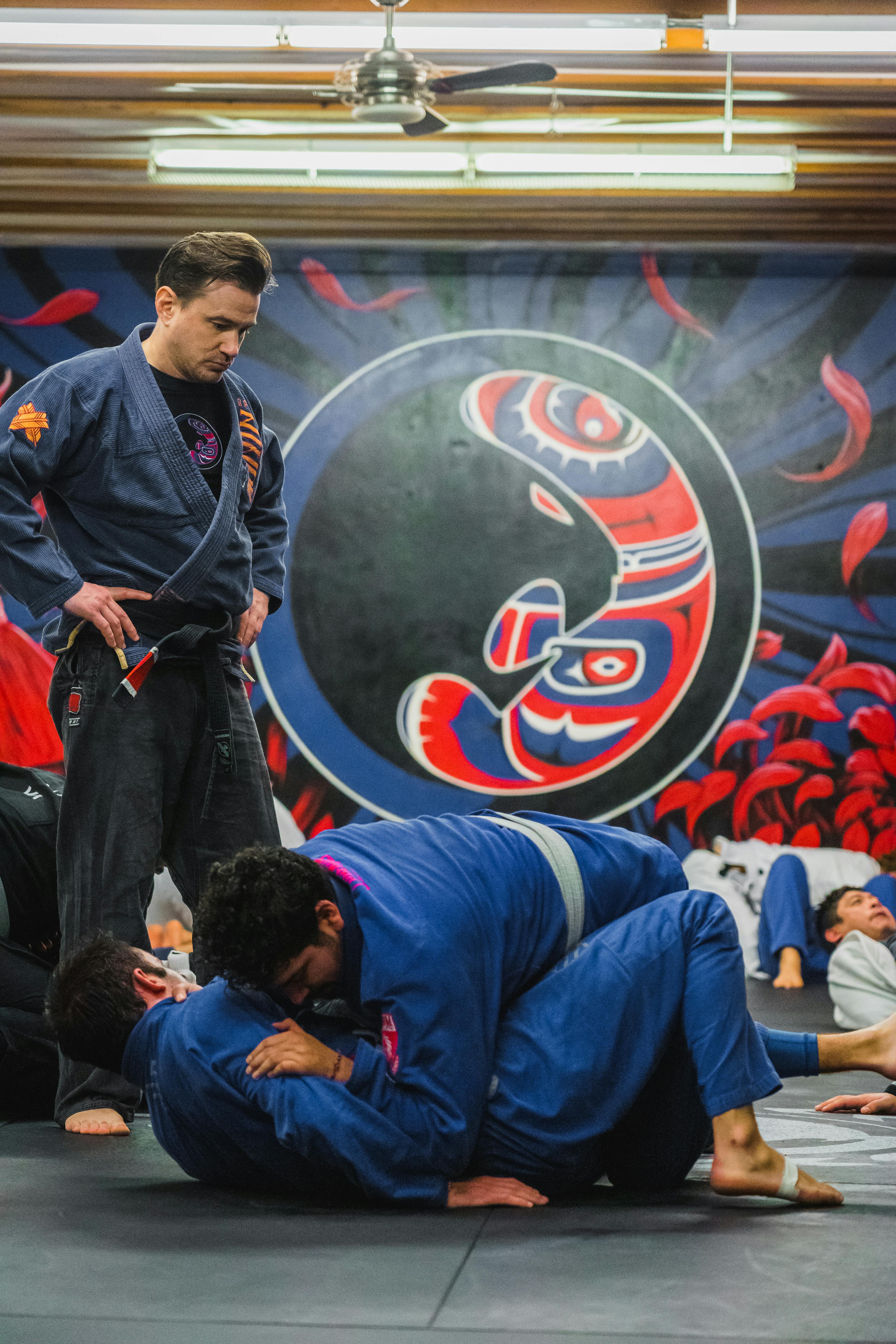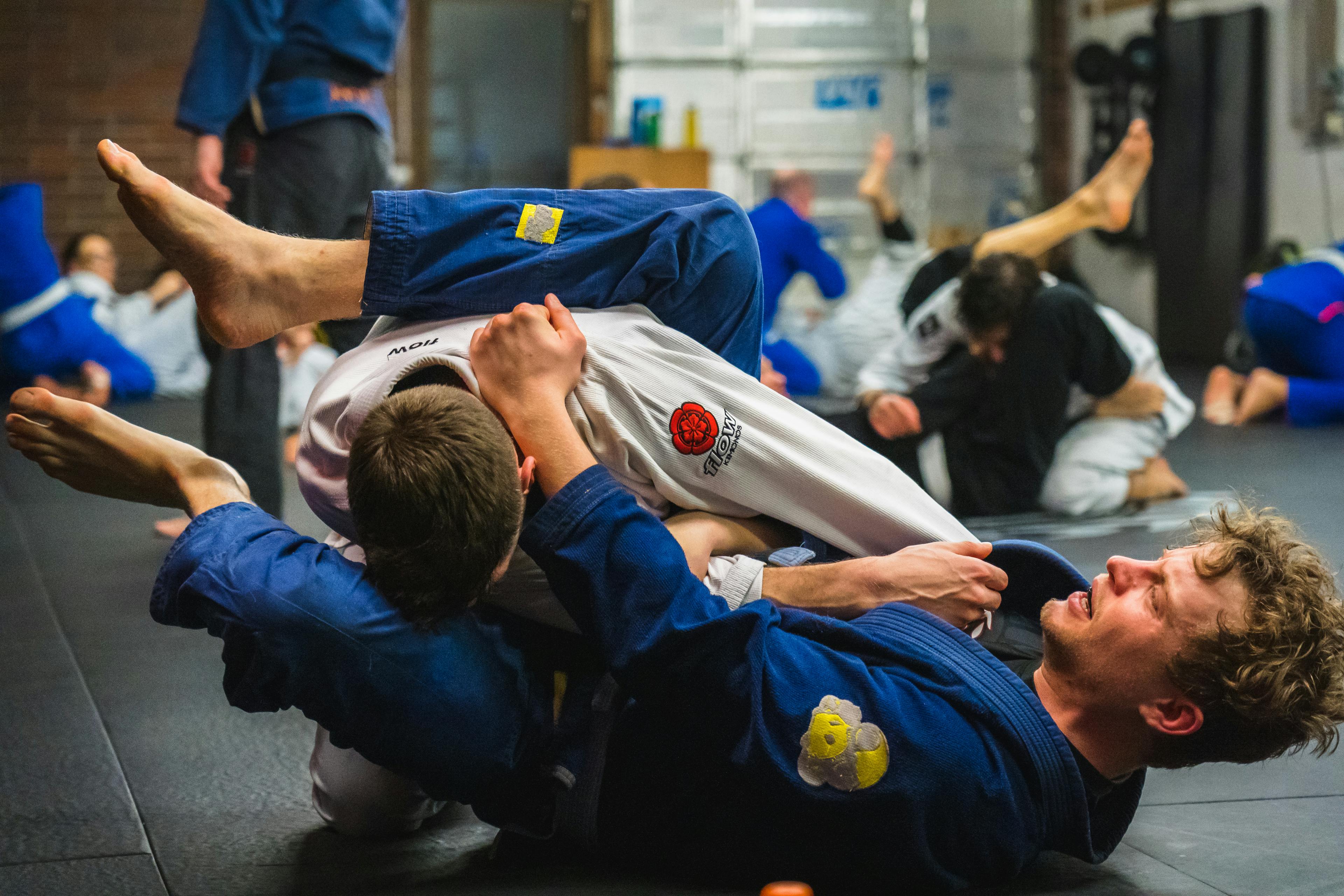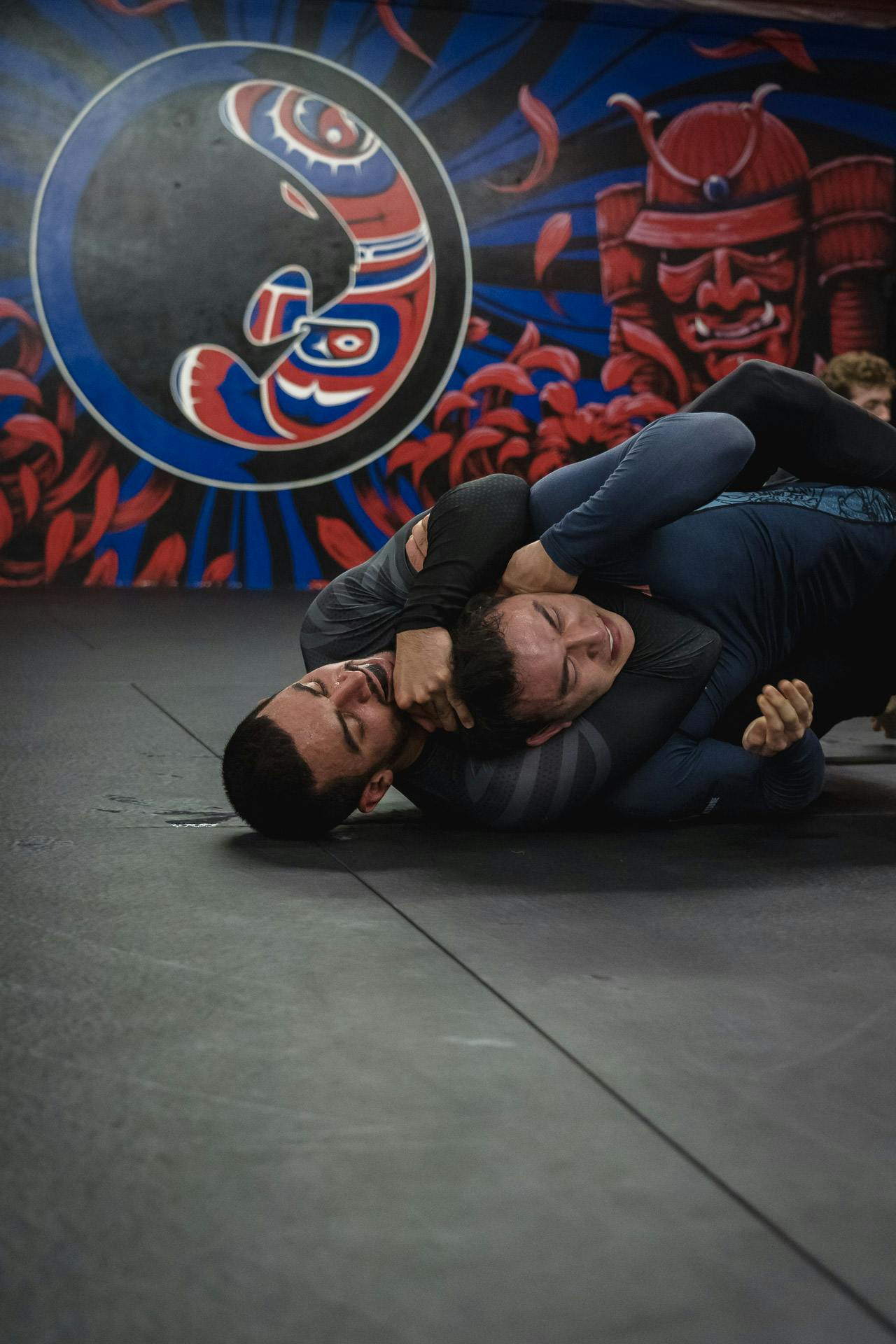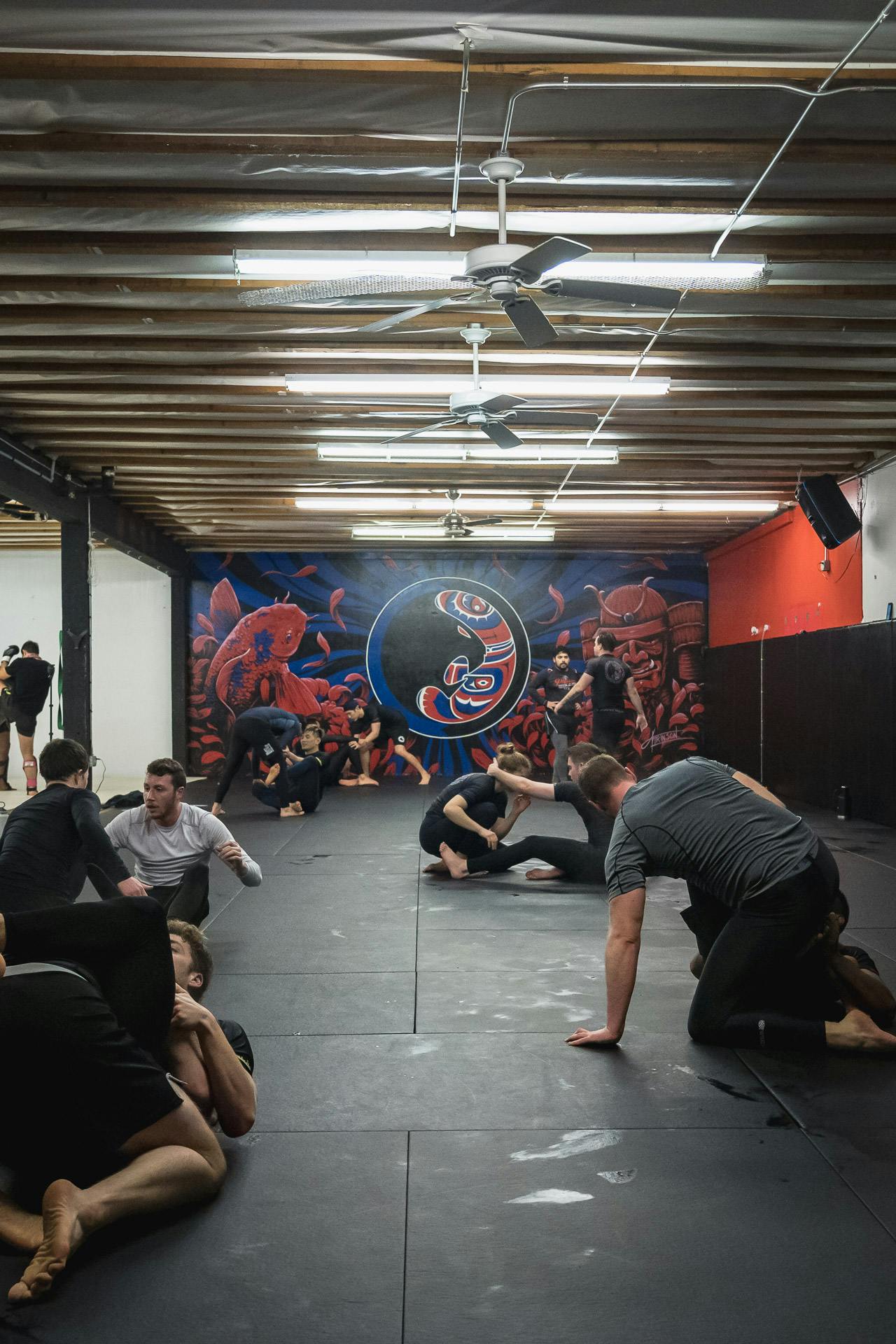Fundamentals

Learn the essential techniques and principles that form the foundation of this martial art. The class typically begins with a warm-up session to prepare the body for training. The core of the class consists of instruction on key BJJ techniques, including positional control, escapes, and basic submissions. Students then practice these techniques through drilling with partners. Some classes may include a short session of live sparring or "rolling" to apply what was learned. The class concludes with a cool-down period, an opportunity for questions, and a discussion of BJJ philosophy and principles. Fundamentals classes provide beginners with a solid grounding in BJJ and emphasize safety, proper technique, and respect for training partners.
Gi

The class typically starts with a brief warm-up segment, lasting around 10 minutes. This warm-up involves various exercises, including cardiovascular activities, stretches, and mobility drills. The purpose is to prepare the body for the physical demands of BJJ training and minimize the risk of injuries.
Following the warm-up, the instructor proceeds with technical instruction, which usually spans about 20 minutes. In this phase, fundamental BJJ techniques are taught, often focusing on positional control, escapes, and basic submissions. The techniques are usually grounded in the traditional and effective style of BJJ associated with the Renzo Gracie lineage.
After learning the techniques, students pair up for drilling, which takes up approximately 15 minutes of the class time. This drilling phase allows participants to practice the techniques they've just learned, develop muscle memory, and refine their execution through repetition.
NoGi

NoGi is a class with focus on grappling and wrestling, participants can expect an intense and dynamic session that incorporates elements from both BJJ and wrestling. Throughout the class, instructors emphasize the importance of controlling positions, effective takedowns, and maintaining a strong base, all of which are critical aspects of both BJJ and wrestling. They also stress the need for adaptability in transitioning between standing and ground positions without the use of a gi.
Open Mat

Open mats foster a collaborative and inclusive atmosphere, encouraging practitioners of all levels to interact and learn from each other. Experienced practitioners may offer guidance to less experienced students, making it a valuable learning experience for everyone. It's a time to experiment with techniques, troubleshoot challenges, and gain valuable mat time.
Overall, a BJJ open mat is a flexible training environment that allows practitioners to tailor their training to their specific needs, whether it's focused drilling, intense rolling, or simply enjoying the camaraderie of the BJJ community.